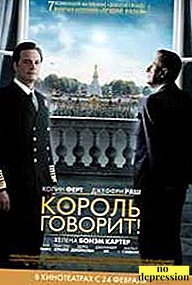About the need and relaxation values we hear all over the place.
But the true meaning of this word remains a mystery to many.
Relaxation: what does it mean in psychology?

Relaxation - This is a cumulative set of techniques, steps or ways by which you can achieve muscle and nervous relaxation and the resulting state of calm (both moral and physical).
Relaxation is a general concept for a whole group of methods, which can differ in both content and effect.
Distinguish relaxation as a state and as an achievement this sensation.
And if actions aimed at achieving relaxation, from the outside look like a passive rest, in fact, the body perceives relaxation as a rather active and complex process.
Relax is like?
Relaxing person consciously calms and relaxes, drives away negative and annoying thoughts in order to achieve pacification.
Relaxation implies not only a decrease in muscle tone, but also a decrease in the tension of the nervous system. The body's work as if "slows down", surface processes (intermittent breathing, fleeting thoughts, fussy movements) become deep and thoughtful.
After relaxation, the person feels rested, becomes more efficient and less irritable.

Achieved clarity of consciousness, meaningful action and concentration on the present moment.
In terms of physiology, relaxation is work of the parasympathetic division of the autonomic nervous systemwhich is responsible for the recovery process during rest periods.
Techniques
It is customary to distinguish two types of relaxation:
- arbitrary (controlled and subject to the process that a person uses to relieve hypertonia, restore strength and emotional balance);
- involuntary (relaxing while falling asleep and sleeping).
The classification of relaxation methods is based on the psychophysiological features of the effects on the body.
- Muscular. The methods of this group primarily affect the muscles, after which the process of general relaxation starts. So progressive muscle relaxation according to Jacobson implies the tension of muscle fibers for 5-10 seconds and their subsequent controlled relaxation for 15-20 seconds.
- Respiratory. The main emphasis on deep breathing, which affects the central nervous system and allows you to achieve a state of oxygen saturation, causing a slight "oxygen intoxication" and concomitant relaxation. A classic example is sequential breathing "belly", when a deep breath is made on 5 accounts, and a slow exit on 7 accounts.
- Visualization. Relaxation is based on pleasant images and plots that a person creates with his imagination and loses in his head. At the same time, it is very convenient to take a comfortable and static position in order to concentrate not on bodily sensations, but on “pictures in the head”. For example, a person imagines how he comes to the beach and falls on the warm sand. It reproduces in consciousness the sensations that arise when the skin comes into contact with the grains of sand heated by the sun. It represents a state of peace and happiness that occurs when the waves of the sea are seen.
- Self suggestion. Positive affinity, attitudes and suggestion techniques aimed at one’s own “I” also help to relax. For example, a person several times slowly and deliberately pronounces: “I feel light and free, my body is flexible and healthy, and my mind is clear and bright.”
As a result, the brain receives a certain signal and is rebuilt under the "mood" of affimentation.
- Exercises. Special exercises from yoga and meditative practices also relieve hypertonia. For example, the popular “posture of the child” or the “posture of the coachman” for relaxation have a positive effect not only on the muscles and nervous system, but even on the functioning of the internal organs.

According to Schulz

Schulz Relaxation is autogenic trainingwhich belongs to the category of hypnotherapy.
The method is quite simple and does not require special knowledge and skills from the therapist or client.
The relaxation cycle includes six exercises. The client, following the therapist, repeats affinity, taking a comfortable position in a chair or chair.
Look should be directed to the tip of your own nose or slightly higher, shifting the angle of view forward. This is very important, since converged vision allows you to "disconnect" from the outside world and concentrate on the inside.
Formulas:
- "I am absolutely calm"
- “My legs and arms are heavy”
- “My legs and arms are warm”
- "My heart beats exactly"
- "My breath is calm and free"
- "My belly is warm with warmth"
- "My forehead is cool"
Formulas are worked out with the therapist in stages or in one session, and depending on the patient's susceptibility.
Progressive Muscle Relaxation by Jacobson

In 1922, Edmund Jacob discovered connection between emotional state and muscle tone.
So he developed the theory that muscle relaxation can eliminate nervous tension.
When performing progressive relaxation, stress and relaxation sessions of individual muscle groups alternate. Classic method consists of the following steps:
- Man is trying master the technique of controlled relaxation and tension individual muscles and muscle groups, including facial and voice.
For this, 10-18 special exercises are performed first through real movement, and then duplicated "mentally", i.e. a person tries to remember the sensations that arise in the process of movement.
- With the help of constant monitoring of their own reactions man finds out which muscles are tense at the time of the appearance of negative emotions.
- Using a person’s previously learned skills at the time when negative emotions appear, an effort of will relaxes tensed muscles. The brain receives a reverse signal, indicating that the negative situation is eliminated. As a result, the body achieves some degree of relaxation.
Examples of exercises to establish the connection between the mind and muscles:
- Having tucked toes, you need to strain them more and more. Then you need to lock in the state of maximum muscle tension and relax.
- Stretch your feet on yourself, contract your muscles and linger in this state for a few seconds, then relax and return to your usual position.
- Squeeze the dominant (for right-handed - right, for left-handed - left) brush into a fist and reach the state of maximum muscle tension, then relax your arm.
It is better to start with the dominant hand, since the control technique in this case will be easier to master.
- Bend the arm and strain the muscles of the biceps, then linger in a state of tension and after 2-4 seconds slowly relax the arm. Over time, you can practice the exercises simultaneously on two hands.
- Lying on the floor and resting on three points (elbows, heels and shoulders), you need to push the buttocks up, raise the pelvis and strain the muscles. After this, you can return to the starting position.
- Shrink the forehead by fixing the position for a few seconds and then relax.
- Squeeze the lips with a “string”, without including other facial muscles in the process, linger in position for a few seconds and relax.


When performing exercises, you need to concentrate not on mechanical repetition, but on the state of the muscles at the time of tension and relaxation.
Required feel and remember sensations that arise at the moment when a person ceases to purposefully strain a muscle and allows it to “lose tone”.
Psychological music for the session
The positive effect comes from music, which can work as an independent means of relaxation, and as an addition to visual methods.
For maximum relaxation, it is recommended to set:
- the sounds of nature (the sound of rain and waves, the singing of birds, the rustle of leaves, the chirring of grasshoppers, etc.);
- mantras;
- classical music;
- rhythmic sounds (soft taps recorded in audio format, paper rustling, noise of pouring grain, etc.).
There is also special music designed to accompany psychotherapy sessions. However, it is advisable to entrust the choice of such music specialist.
The words
Words play a huge role in the process of relaxation. And you can use the capabilities of this tool in different ways.
Concentration

If in the head obsessive thoughts soar and it is impossible to suppress them; a person cannot fully relax.
Concentration on one particular thought, clothed in verbal form, will help solve the problem.
It is enough to pronounce a cherished word (for example, “Christmas tree”) in a whisper, at the same time creating an appropriate image in your head.
Third-party and disturbing thoughts will leave consciousness by themselves, as they will be suppressed by the “central process of thinking”.
Installations
With the help of words you can create in your head a certain installation or attitude. An example is affinity, formed through the "I":
- "I feel comfortable and calm."
- “I feel cosiness and comfort”
- “I am happy and pay attention only to positive events”
- "I feel a pleasant warmth in the solar plexus area"
Activation

Words can be used as a kind of activation code.
Enough in moments of maximum calm and relaxation to pronounce one single wordby mentally associating it with the current state.
The result will be a stable response of the body to the word.
Relaxation
Speaking of guttural sounds, various words, etc. helps to spill out emotions, satisfy “the desire to speak out” and get rid of indoor units.
At the same time, it is not necessary to build sentences and put meaning in them. The flow of words can be incoherent and devoid of logical grain.
Thanks to relaxation, emotional overstrain, burnout and chronic fatigue can be avoided. And with regular practice the ability to "hear" your own body will develop and understand his desires.
Jacobson technique:



